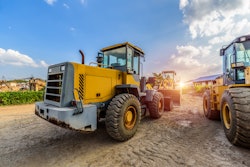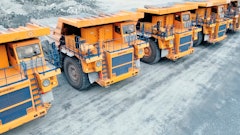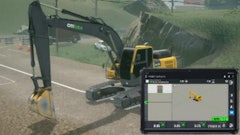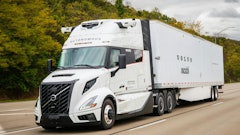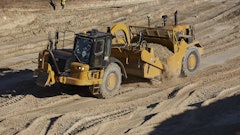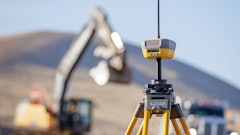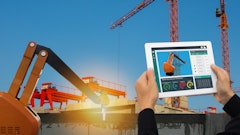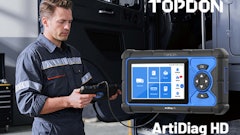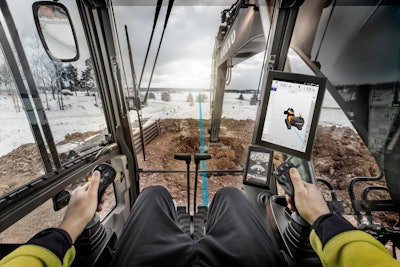
Over the years, we’ve seen operators with lots of experience do some amazing things with their machines. Maybe they have an eye for adjustments that improve precision, or perhaps they know which features of their machine to use and when to boost productivity or efficiency.
But with today’s advancements in heavy equipment technology, even skilled operators can benefit from a real-time assist to enhance their daily performance. Automated machine movements and incredibly small refinements in technique can be the key to meeting project specs, cutting down on or eliminating costly rework and maximizing profitability.
This is where machine control systems factor in.
Maximizing Excavator Accuracy & Safety
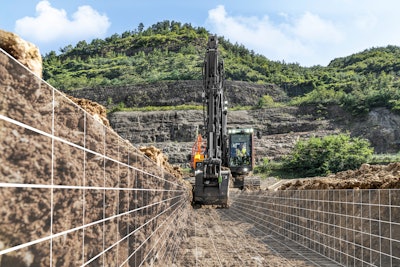 A system with an in-cab tablet that incorporates sensors and GPS technology can support accuracy and efficiency.Volvo Construction Equipment
A system with an in-cab tablet that incorporates sensors and GPS technology can support accuracy and efficiency.Volvo Construction Equipment
For those working on dangerous or difficult jobsites, remote-controlled solutions open new opportunities. This impressive add-on allows you to operate an excavator from a distance in areas with hazardous substances (like in a potash mine) or poor ground conditions (like mud). Simply put, remote control provides a safer view in situations where the visibility from inside the cab is deficient or unsafe.
On-the-Go Precision for Loaders
Machine control systems provide valuable benefits to more than just excavator operators. On-board weighing apps for wheel loaders, for example, are popular because many are so easy to use.
On-board weighing makes quick work of accurate loading. If you have a truck come in with a target of 23 tons, your operator can fill their bucket and dynamically weigh it—often without even being stationary. As they drive up to tip the load into a haul truck, it’ll lock in the weight. This means the operator can see the exact weight of the load they’re about to dump.
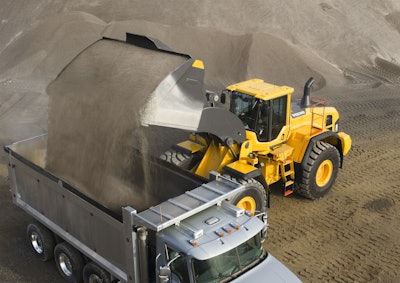 On-board weighing provides real-time insight into the bucket’s load to make overloading, underloading, reweighing and waiting times a thing of the past.Volvo Construction Equipment
On-board weighing provides real-time insight into the bucket’s load to make overloading, underloading, reweighing and waiting times a thing of the past.Volvo Construction Equipment
Several manufacturers include some type of weighing program on their loaders. Some also have features that allow companies to monitor and control the total loads of multiple trucks.
How does that work? Suppose a highway contractor needs 60,000 tons of sand and 40,000 tons of gravel delivered to a concrete batching plant. If nine trucks are delivering to this customer, you can use this advanced feature to set up a work order:
- Set the target at 60,000 tons of sand and 40,000 tons of gravel.
- Add the names of each of your nine trucks. This makes it especially easy if your trucks have different weight restrictions.
- Set up the material you’re delivering (sand and gravel). This gives you the ability to monitor and track the material that’s being delivered by each truck. The operator in the cab can also monitor what they are loading throughout the day.
A feature like this allows site managers to go in at the end of the day and export data from a flash drive: the different projects, trucks and material that was delivered or sold. They see every truck load and can see when a particular operator started loading a truck, when they finished, what material they took and what the truck name was. Using these types of machine control features, they know exactly when they’re ready for the next stage based on the data — and it doesn’t matter if they’re six miles away or 600.
Leveling Up Productivity & Profits
Machine control features dramatically improve accuracy, from load weight to trench depths, angles and directions, to the compaction density of a newly laid asphalt mat. In nearly every instance, this accuracy equates to reduced mistakes and/or earned bonuses—and when increased productivity and efficiency are factored in, most who use these features experience higher profits.
In an industry where precision and efficiency earn more bids and drive profitability, machine control systems represent a bit of a paradigm shift. For owners and operators, these tools aren’t just about automating processes but are about enhancing the capabilities of the machines in beneficial ways.
It’s not that operators aren’t good at what they do—in fact, most operators learn quickly and adapt their skills to show management and the other operators on site exactly what they can do. Machine control systems simply help make good operators great and great operators exceptional.
When a company has all its operators running at the top of their game, profits rise. When researching new machines, it’s worth the time and effort to ask which machine control systems are available and how they work for the brand(s) you’re considering. Undergoing a cost/benefit analysis may help you select one brand over another if their machine control system has a more favorable return on investment.
Our advice is simply: Ask and learn. What do you have to lose?




